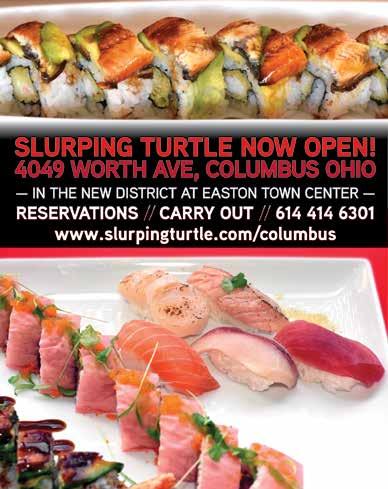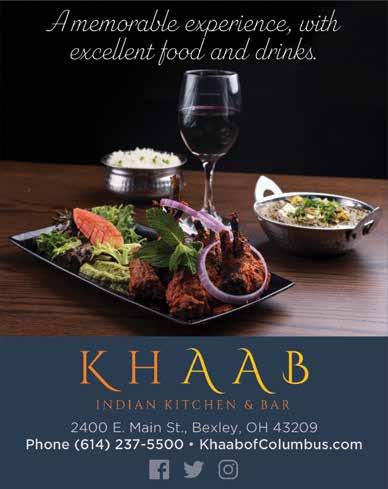
8 minute read
FOOD HALL FANDOM
from (614) July 2021
Central Ohio is bursting with Food Halls—find out why we love the newest national trend →
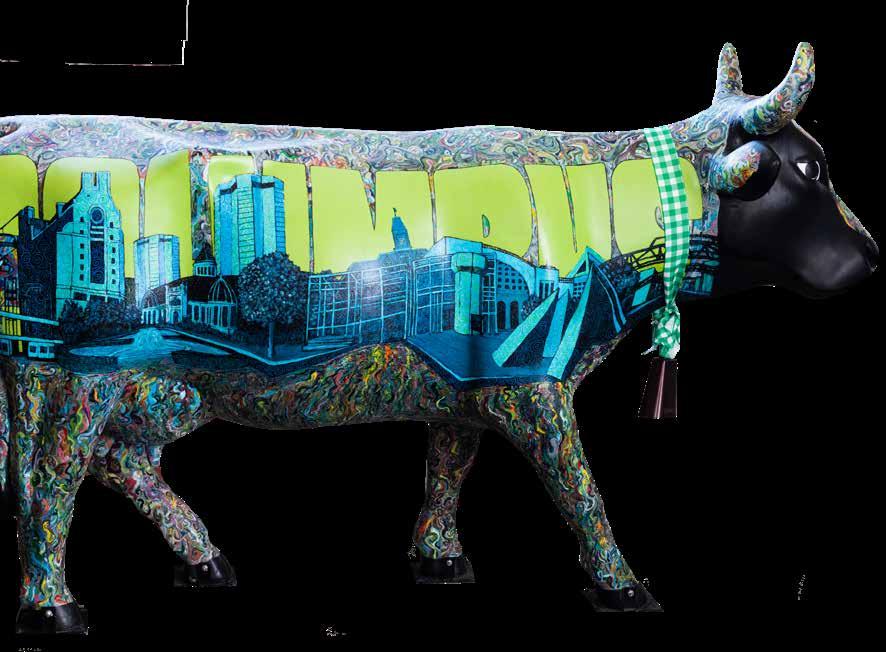
By Jack McLaughlin Photos by Ally Schnaidt
Arguably, one could say that the North Market was the original food hall. It’s roots trace back to 1876 as the original public market, selling everything from food to flowers, and clothes to trinkets.
“I like to tell people that North Market has been trending for the last 145 years,” said Rick Harrison Wolfe, executive director of the North Market. “It’s always been in the top 5 of things to do in Columbus and for people who live there.”
Wolfe added that the market, which is a non-profit, sees between 1-2 million visitors annually, roughly half of which is local traffic; the other half comes from tourism.
“No offense to the new guys. I love what they’re doing, but we have the benefit of authenticity,” Wolfe said. By this, he means that, while other spots like Budd Dairy and East Market might be operating out of beautifully-restored old spaces, North Market has been doing so for nearly the last century and a half.
But recently, Columbus has seen the newest trend on the food scene—food halls—sprout up in all kinds of places. Basically, a food hall is a mall food court, without the mall—but way, way, way cooler. From the Short North to the far northwest side, Central Ohio is seeing this national trend between its 270 borders. According to market research from Cushman & Wakefield, the number of food halls in the U.S. increased by 700% percent between 2010 and 2019 alone.
And in Central Ohio, In roughly a year’s time alone, we’ve seen the opening of local spots like Cameron Mitchell’s Budd Dairy Food Hall, expansion of the original North Market to the North Market Bridge Park in Dublin, and Center Street Market in Hilliard. And before the beginning of 2022, the city should have two more to its name, in the form of the historic East Market (a section of the Trolley District development on the near east side), in addition to Bubbly Hall, a 10-vendor space with several additional temporary stalls coming to New Albany.
And while Columbus is rich with dining options, the food hall stands out, undeniably, as one of the hottest dining trends in the city today. Read on to see why. →
SO WHAT IS A FOOD HALL, ANYWAY?

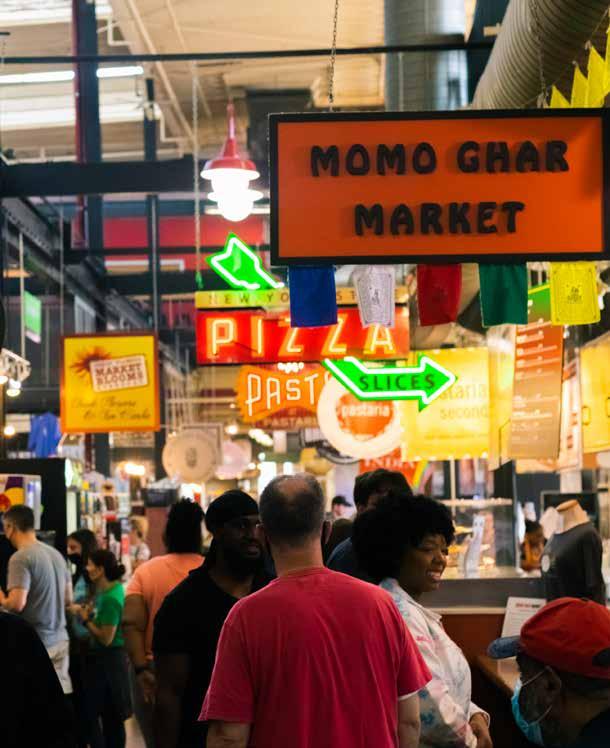
Good question, because when we really get into it, there is no absolute definition for what a food hall is. That being said, we’ve seen enough of them pop up throughout Columbus and the U.S. as a whole to break down the major features that most of them share.
First, they almost all feature local concepts or smaller franchises, something that holds true among the examples in Columbus—they all heavily support local, independent businesses.
Food Halls also have a destination component to them. Whether it’s the historical interior of Budd Dairy (which occupies the former Budd Dairy Company Building, a milk processing and distribution facility) or the bright, industrial-chic aesthetic of North Market Bridge Park, food halls usually occupy venues that are worth your time and attention by themselves.
And lastly, the food hall is usually simply more in tune with popular, trendier options. From the North Market offering an artisan cheese shop and Tibetian dumplings, to the modernized takes on classic southern dishes served at Budd

→ North Market signage
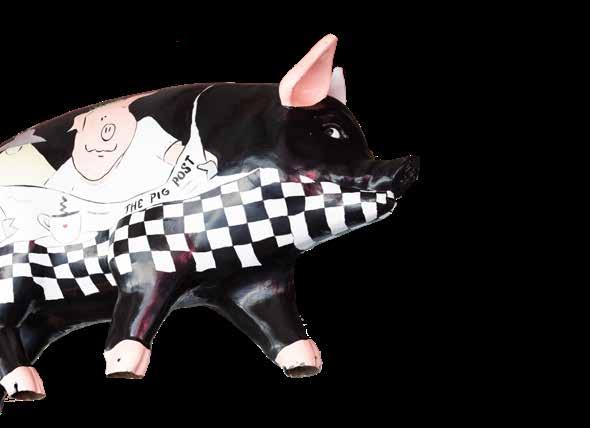
↑ North Market customers making their selections
↓ Rick Harrison Wolfe, Executive Director North Market

Dairy, the makeup of the vendors in each hall is carefully considered and on-trend.
“When you come to a food hall you expect great offerings, and a lot of variety,” said Budd Dairy general manager Jeremy Hughes.
But where did they come from?
It’s widely accepted that the first true contemporary food hall was Eataly, which was established in Turin, Italy, in 2007 inside a former Vermouth factory. The concept spread to the U.S., with Eataly popping up in L.A. and New York.
According to a report from international commercial real estate broker Cushman & Wakefield, in 2016 there were at least 10 different food halls in New York alone. They didn’t formally arrive in Columbus until 2018, when the Corso Ventures’ Short North Food Hall first opened. (The food hall has since closed to make room for the expansion of Standard Hall, another Corso concept.) →

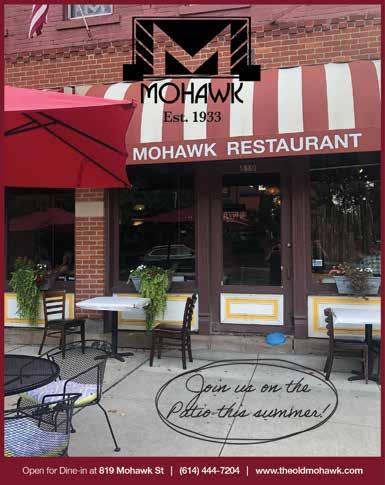

WHY DO WE LOVE THEM?

Well, the first and most obvious reason we’re all jumping on the food hall bandwagon comes down to choices. From tacos and poke to pizza and pho, food halls offer options to please everyone in a single space. But we also love food halls because they’re social.
“It’s a gathering place,” said Kathryn Nuss, franchise owner of the Budd Dairy chef partner (their term for vendors) Cousins Maine Lobster. “People come to order food, and order drinks, but they also just hang out there as well, especially for sporting events, the derby, baseball, football.”
Budd Dairy, like most other Columbus food halls and newer market spaces, features multiple on-site bars, (including a rooftop bar-patio combination), the presence of which suggest that these are social spaces as much as anything else that provide us with a unique experience.
“Oftentimes when groups, family, or friends come in together, they scatter, if you will. They all get different things from different artisans,” said Jon St. Julian, one of the ownership partners of Center Street Market, a collection of food and drinks vendors that opened in Hilliard last year. “When they meet back at the table we see them sharing, tasting, and talking about all of the vendors within the market. It's a really unique experience where you can explore, share, and socialize.”
The data backs this up as well, according to Ethan Shaije, the business manager of Bubbly Food Hall, which will stand as central Ohio’s newest food hall when it opens later this year in New Albany.
“If you look at the statistics, nearly 60% of people prefer to spend money on unique experiences over products,” he said. “And with food halls like Bubbly Hall, that’s really what we’re promoting and encouraging, the experience.”→
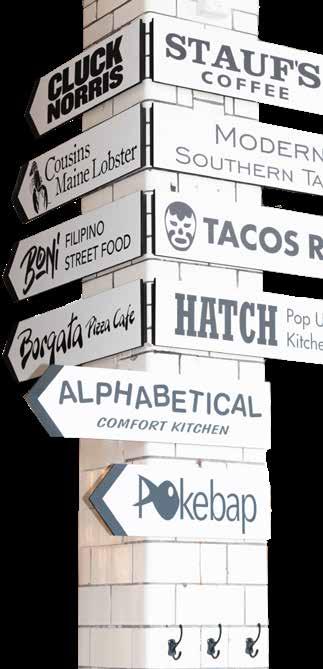
↑ Budd Dairy's interior signage of vendors
"IT'S A REALLY UNIQUE
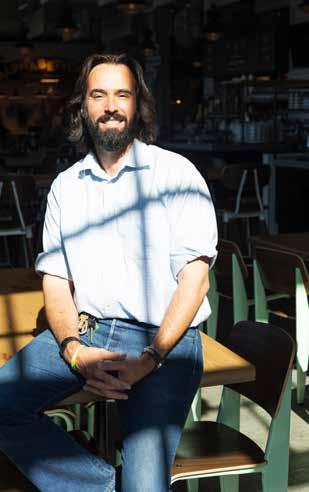



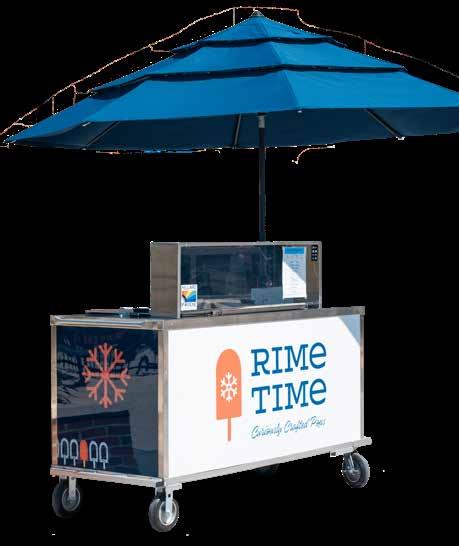
THE FUTURE OF COLUMBUS FOOD HALLS
So, what’s next?
With five different food halls and markets slated to have opened between 2020 and the end of this year, it’s clear there will be more food halls, which is a great thing for Columbus restaurants as food halls, in many ways, serve as incubators or cultivators for up and coming Columbus restaurants.
“From a vendor perspective, food halls are just such a great option for those with a small footprint,” said Stevens, who oversees the 1400 Food Lab in addition to the soon-to-open East Market. “This is a great way for small businesses to grab the next stepping stone, for a food truck or a pop-up to establish a brick and mortar without having to deal with all the stuff that comes with owning or renting a building.”
Nuss agrees. “As a chef partner, we only have to manage the space behind our counter, and that’s huge. It saves us time, money, everything.”
↓ Outdoor vendor at Center Street Market featured on their patio
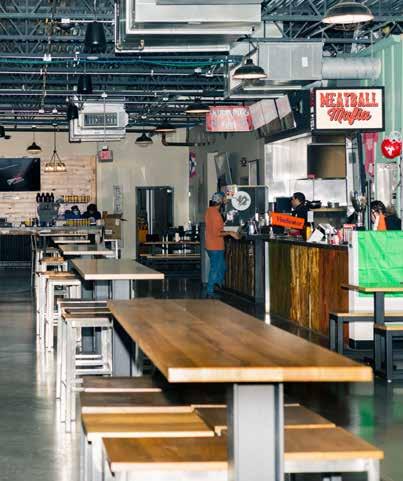
↑ Vendors of Center Street Market
What’s more, there have been smaller eateries that, using the food hall model as an intermediary come-up, made it big. Case in point: Momo Ghar. After starting out in a tiny corner of Saraga International Grocery, the Tibetian dumpling concept snagged a stall at North Market on its way into the national spotlight. The eatery now operates its own standalone restaurant in Dublin (it still holds its North Market space as well), and is hugely popular, having appeared in an episode of Diners, Drive-ins, and Dives).
So, whether you like them or not, you’re likely going to see a good deal more of food halls—and maybe even supporting the next big thing.
“The way I look at it is like this,” said Jeremy Hughes of Budd Dairy Hall. “Every time I come to work, I could be standing in the midst of the next Cameron Mitchell, the next Dave Thomas.”♦
To learn more visit 614now.com to stay on top of the newest openings in Central Ohio
